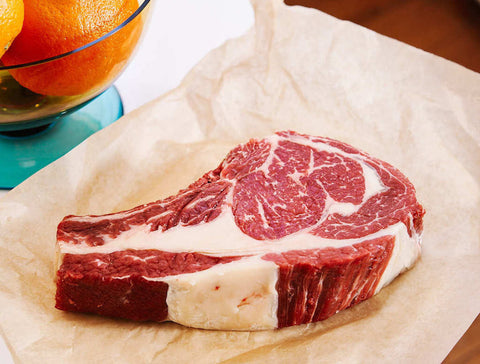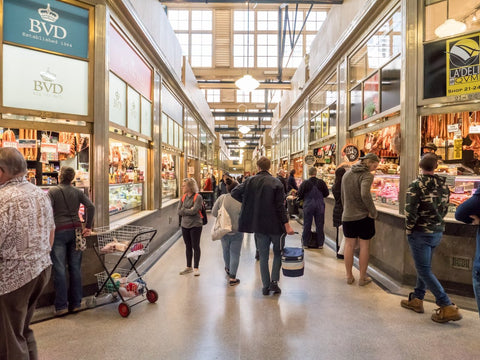A conversation with Nev Bredden – Wattle Grove Organic Beef
At the start of winter 2019 Oliver took a short trip (about 2 hours from Hagen’s Richmond) out to Wattle Grove Farm in Euroa to see the Bredden family with whom Hagen’s have had the longest farmer-butcher relationship with. Nev, Carol and their son Scott greeted Oliver with a handshake, a hug and a big warm home cooked lunch. The four sat together in the kitchen tucking into bowls of soup and homemade apple and cinnamon muffins and discussed the state of the drought, the farm and the Bredden’s ability to keep supplying Hagen’s Organics beef.
So… a lot of people wouldn't know that this year is just one in a string of consecutive drought years that we've been facing. And obviously, the challenges compound as we go along. What kind of difficulties are you facing in your day to day running of the farm Nev?
Nev:
It all started with the Millennium drought, with a couple of good years in the middle there that saw decent rain, but the last three years we've been hand-feeding a portion of the cattle here continuously since November 2017. Not all the cows have been fed continuously, of course, most filling up on the grass in the paddocks, but we’ve had to hand-feed an increasing portion of the cows since late 2017 to supplement them as there hasn’t been grass on the ground to keep them going.
Oliver:
You mentioned hand feeding, explain that to us, and how much more labour intensive method is.
Nev:
Well, when we had plenty of hay, you would just use the tractor, put a bale of hay out, roll it down a hill or put it in a circle, steel circle, so the cows couldn't trample on it. Fairly straight forward, but not as much labour as we do now. Today, because there's no ground cover, and no hay so we're feeding grain or pellets. I go up to the silo with about a four-gallon tin, fill it up and distribute it into the bathtubs we have around the paddock.
Oliver:
So the amount of labour in feeding the cows has gone up significantly because you have to do this all by hand?
Nev:
Oh yes. A lot.
Oliver:
Let's talk about the cost of feed, and what that means for you to feed your cattle right now compared to years when you’re not in drought?
Nev:
We would generally only feed a small amount and now we're hand-feeding every cow with the tins of pellets and bales of hay, when we can get it. We would normally hand-feed 20% - 30% of the herd now that’s gone up to almost 100% of the herd. I know that feeding that much and the price is all hay, grain at least double than four months ago.
Oliver:
You’ve increased the number of the cows in the herd you need to hand feed from 20% to almost 100% and on top of that because feed is so scarce across the whole country, it’s double in price.
Nev:
Yes that’s right, we would normally only feed perhaps 20% of our cattle. We're now feeding 100% of the herd every day. And the price has at least doubled for grain and hay, if you can get it.
Oliver:
This is compounded?
Nev:
Yeah. It’s hard.
- Ultimately, what we found in this conversation with Nev was that the ground in his paddocks are bare.
- Continuous drought weather has meant the ground is too dry to grow grasses and plants the cows would typically eat.
- So the cows rely on Nev bringing them enough food into the paddock so they can survive.
- Nev, like all good farmers, prepares for harder times by storing hay and feed. Because this drought has been going on for so long, these stores on his farm have been exhausted, so Nev must buy in hay from NSW, VIC and QLD. However, due to the drought being countrywide, stores and supplies of hay were redistributed to NSW farmers during 2017/2018 to support them through their drought hardships, this led to a shortfall for local farmers.
- Because everyone needs the hay the price has skyrocketed, demand well-outstripping supply. But again, as rainfall is significantly lower during the drought, there are fewer and fewer farmers able to grow and supply this hay to the market.
- As consumers, we need to weigh up the cost of eating meat and consider the scarcity of water, hay and grain and what this means for production. With more and more costs weighing down on the farmers themselves, we as consumers need to support and bare some of the weight of this cost increase.







